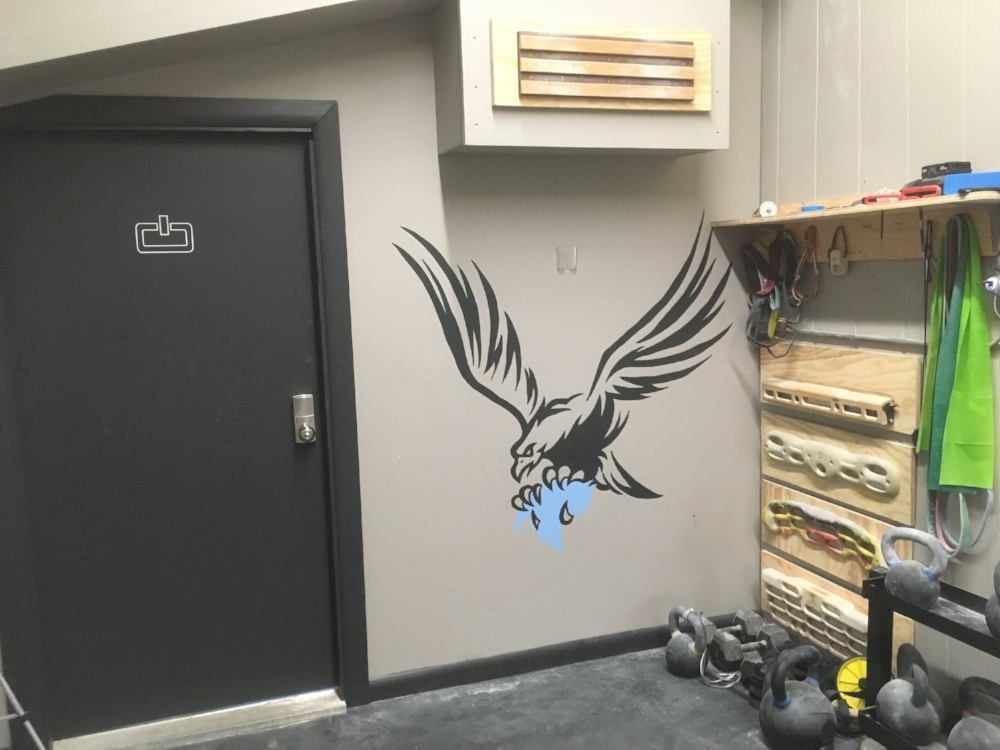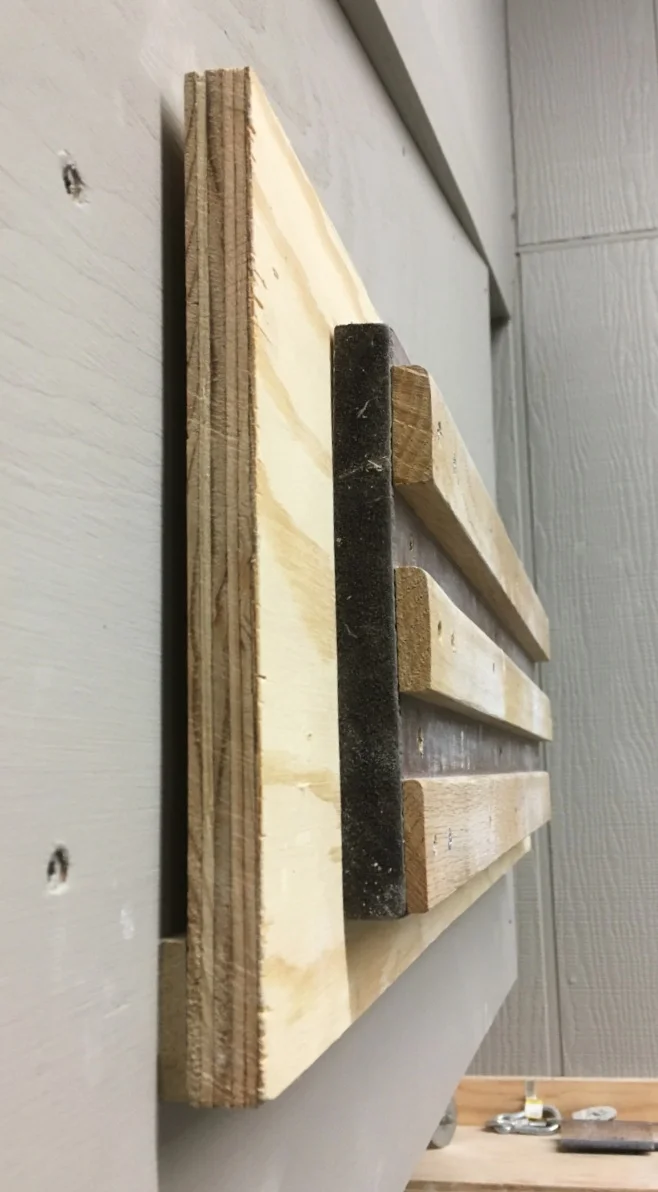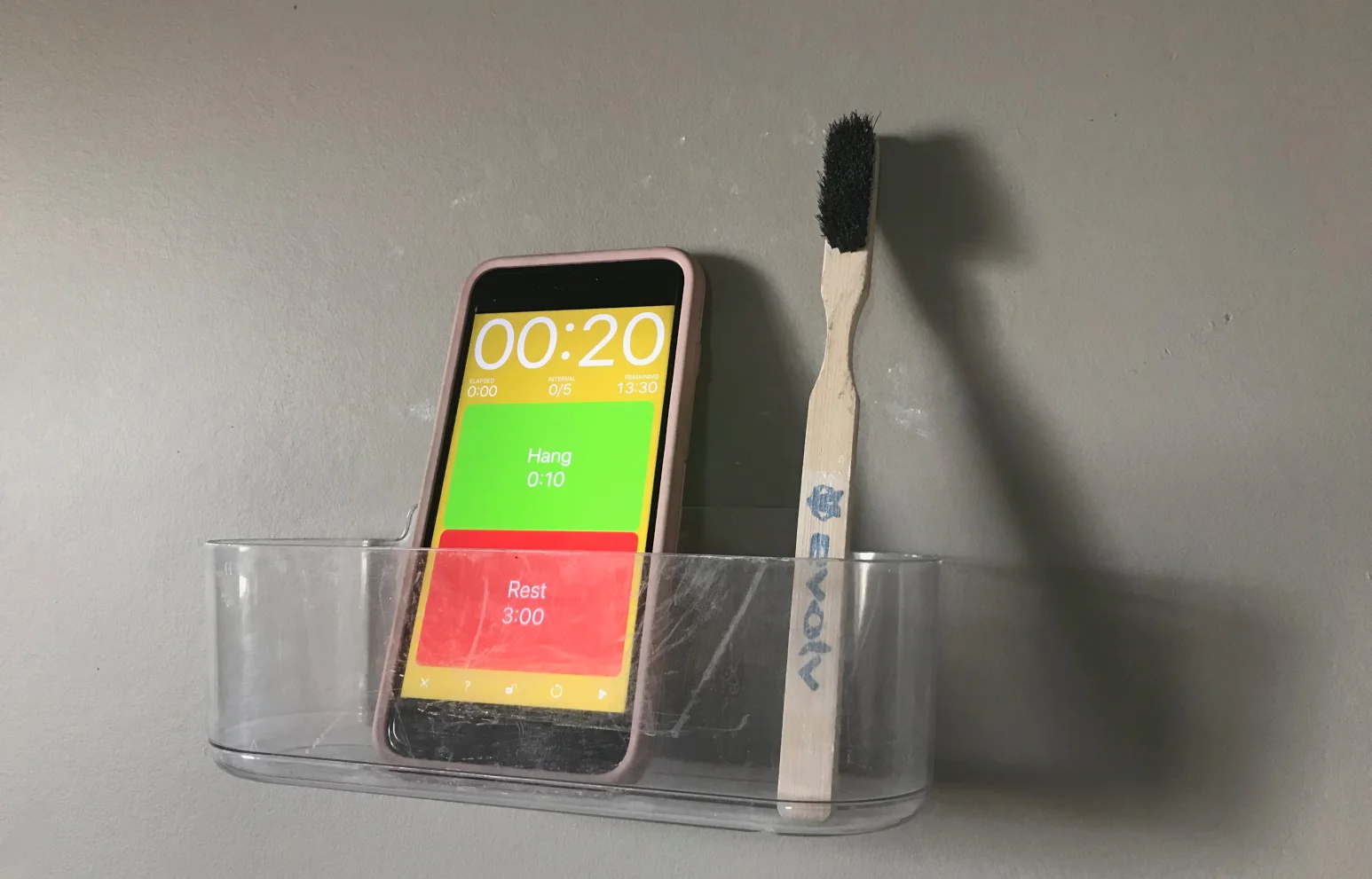Sleight of Hand: Interchangeable Hangboarding (Video)
As commercial climbing gyms move toward using holds and setting that more resembles parkour than outdoor climbing, and focusing their efforts on bringing in new customers (more on how your gyms are holding you back here), we are seeing an increase in the need for home training zones. Not all of us have palatial garage spaces, nor do we need them. Over the next year, we’ll be putting together a series of blog posts, videos, and podcasts on building your own home training space. What you need, what you don’t, and how to avoid costly mistakes.
For many climbers, the first training tool they bring home is the hangboard (still my favorite hangboard is my homemade one in the photo, which you can learn more about here). It takes up little space and is an incredibly effective tool. With so many on the market, you can nearly always find one to scale to your level of finger strength. So we’ll start there.
The Machine Shop
If you’re like many other climbers, you’ll end up with a collection of hangboards. Further, if other people are sharing your training space, you’ll often need to hang several models to account for the variety of strength level. Now you’re taking up valuable real estate.
In my home gym, The Machine Shop, rather than hang up my entire collection to be used, I set about finding a simple and classy way to switch the boards out.
While polling our online community, our friend Andrew Vaserfirer suggested the solution that I ended up going with. A training fiend with an incredible home gym, he’s used them for years, and never had a problem.
The Z-hanger, modeled after the French Cleat, is made of aircraft grade aluminum and is rated at 120lbs per foot in drywall. I took the chance that when screwed directly to a stud, it would be much stronger. I went with 18” hangers to fit my hangboard mounting boards. Although the conservative weight rating puts them at 180 lbs, I’ve hung and done pullups with over 250lbs, and noticed no movement whatsoever. The Z Hangers come with wood screws and screws meant for drywall. While I used the wood screws (plus a few from my own collection) to attach the hanger to the back of my hangboard mount , I got rid of the drywall screws in exchage for higher quality, longer wood screws to attach the hanger to my hangboard station. You can see in the 2nd photo below that I got a little screw happy. Some of those are short, some are longer, and all go into either the 3/4” plywood it’s mounted on, or into the 2x4” stud behind the plywood. It’s solid.
Back side of the hangboard mounting panel.
The hangboarding station.
You’ll also notice that there is a strip of wood mounted below my Z Hanger. This is because when you hang the board, it ends up offset by about 1/4”. To take care of this offset (so that my board isn’t overhanging and undue stress put on the hanger) I installed a simple 1/4” strip of trim that can be purchased at any hardware store or lumberyard. It’s also been cut to the width of my hangboard mounting boards so that I can obsessively line it up with the edges - ensuring that the two Z Hangers are perfectly lined up. This way there is no danger of tilting in the case of a one armed hang near the extreme edges of the board.
While this solves the issue of not having enough space to hang your entire collection of fingerboards at once, it creates a problem of storage. What exactly do you do then, with all of the leftover boards?
Simple really - you buy more Z Hangers and using the same method (though fewer screws and no 1/4” strip) mount the other boards to a place where they will be stored. I chose a section of wall close to my hang station so that it’s easy for anyone to change the boards as needed. You can see in the top photo of this post that the boards are kept completely out of the way, organized, and easy to access.
THE STEPS
I’m going to keep these simple and assume your carpentry skills are at a proficient level. If not, hand this over to someone who has the necessary skills.
Order your Z Hangers.
Cut a mounting panel for each of your hangboards. These should be 3/4” thick plywood, cut slightly larger than your largest hangboard. Be sure to cut them square.
Mount one half of the Z Hanger to the back side of the hangboard mounting panels, making sure they are all the centered and equidistant from the top edge. Open end of the Z Hanger facing down.
Attach the hangboards to the mounting panels, being careful to make sure they will be level.
Mount the other half of the Z Hanger to the hangboard station. Be sure that it’s level and securely attached, ideally to a stud or 3/4” plywood. I wouldn’t trust these in sheetrock or drywall.
Install the 1/4” thick strip at the bottom edge of where your mounting boards will land.
Hang your favorite board and get to building stronger fingers!
BONUS TIP
Always struggling with where to put your timer so that you can see it? Make it easy on yourself and pick up a clear caddy from 3M. With damage free removable adhesive strips, it’s a perfect solution for holding several phones and brushes. I can attest to the damage free aspect, as I had to switch to this larger version after the below video was created - iPhones keep getting bigger!
Let us know if you’ve found other clever ways of keeping your training space organized and easy to access!
Power Company Climbing takes no responsibility for injury caused by your hangboarding or poor carpentry skills. Proceed at your own risk. By purchasing products through the Amazon links on this post, you’re helping support this Home Wall series. Thanks.


















In a world where home training setups for climbing are increasingly important, saving space is key.